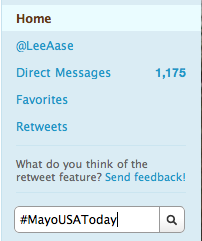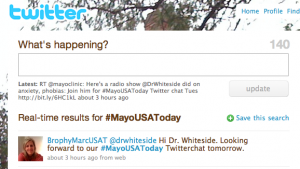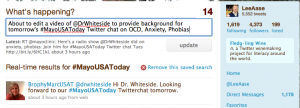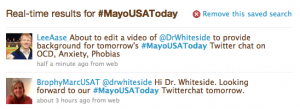Yesterday I was contacted by Mary Brophy Marcus of USA Today for comment and perspective related to a survey of parents and teens on online privacy. I’ve included an excerpt of the resulting article below:
Three out of four parents (75%) say they would negatively rate the job social networks are doing, according to the survey of more than 2,000 parents and 400 teens by Common Sense Media, a national nonprofit organization focused on helping kids and families negotiate the social media galaxy.
“American families are deeply worried. Privacy is a huge concern,” said James Steyer, CEO and founder of Common Sense Media, who wants to see lawmakers update online privacy policies.
Steyer says the industry alone will never protect the privacy interests of children.
“Obviously we’re going to need updated online privacy laws which haven’t been changed since 1998, which is like Medieval, centuries ago. We need to put heavy pressure on the industry,” he says.
While the survey indicated that most parents (70%) think schools should play a role in educating students about protecting their privacy online, social media experts feel families should shoulder the responsibility, too.
“I don’t know whether it’s in the schools that education needs to happen, but it has to happen,” says Lee Aase, director of the Mayo Clinic Center for Social Media, in Rochester, Minn. “So much burden is on the schools. Some of this needs to happen in the families.”
Aase, a father of six children ranging in age from 11 to 24, says privacy tools are already in place that people are just not taking advantage of. He says there is immense power to punish bad behavior, including blocking people on Twitter and unfriending them on Facebook. You can also report abuses directly to Facebook.
“If someone’s really bothering or hassling you, you have the ability to stop them from communicating,” Aase says.
I also suggested, as indicated in the close of the article, that parents being friends with their kids on Facebook is an important safeguard, but also an important way to stay in touch.
A few additional thoughts and some background:
“Make the schools do it” is a cop-out. My dad was an elementary principal and then a school board member. He sensitized me to how often “make the schools do it” is the first “solution” offered to whatever perceived problem society faces. I don’t see training kids in online privacy protection as a core responsibility for public schools. I think it’s fine if some local districts decide they want to make it part of their curriculum, but with everything else they have to do, I don’t see this as the only (or best) way to deal with kids’ privacy online.
The schools aren’t the only place education happens. As SMUGgles know, learning online is cost-effective and interactive. And it scales. Unlike a traditional classroom in which a high student-teacher ratio makes learning more difficult, more people involved in an online environment improves the course quality, because learners get the benefit of others’ comments, questions and answers. And if we’re learning about online privacy, wouldn’t it seem that online would be the right context in which to learn?
Organizations concerned about privacy should provide great and engaging online curriculum for students and their parents. Most people read Terms of Use and Privacy Policy documents as thoroughly as a Mac user does software manuals (a bit of self-deprecating humor, there.) An organization with a passion for privacy could do a lot more good by creating online learning resources for teachers and parents.
By the way, with our Mayo Clinic Center for Social Media and the related Social Media Health Network we will be developing resources and training materials for patients and medical professionals to provide education on privacy settings and practices for those using social media tools in the medical context.
What do you think? Are online privacy laws hopelessly antiquated? Or is the main problem that people don’t take advantage of the privacy options most sites already have incorporated? How big is the online privacy problem? Is this a “huge concern” that has you “deeply worried” or is it a something you think is relatively well managed? What would you do about it?






